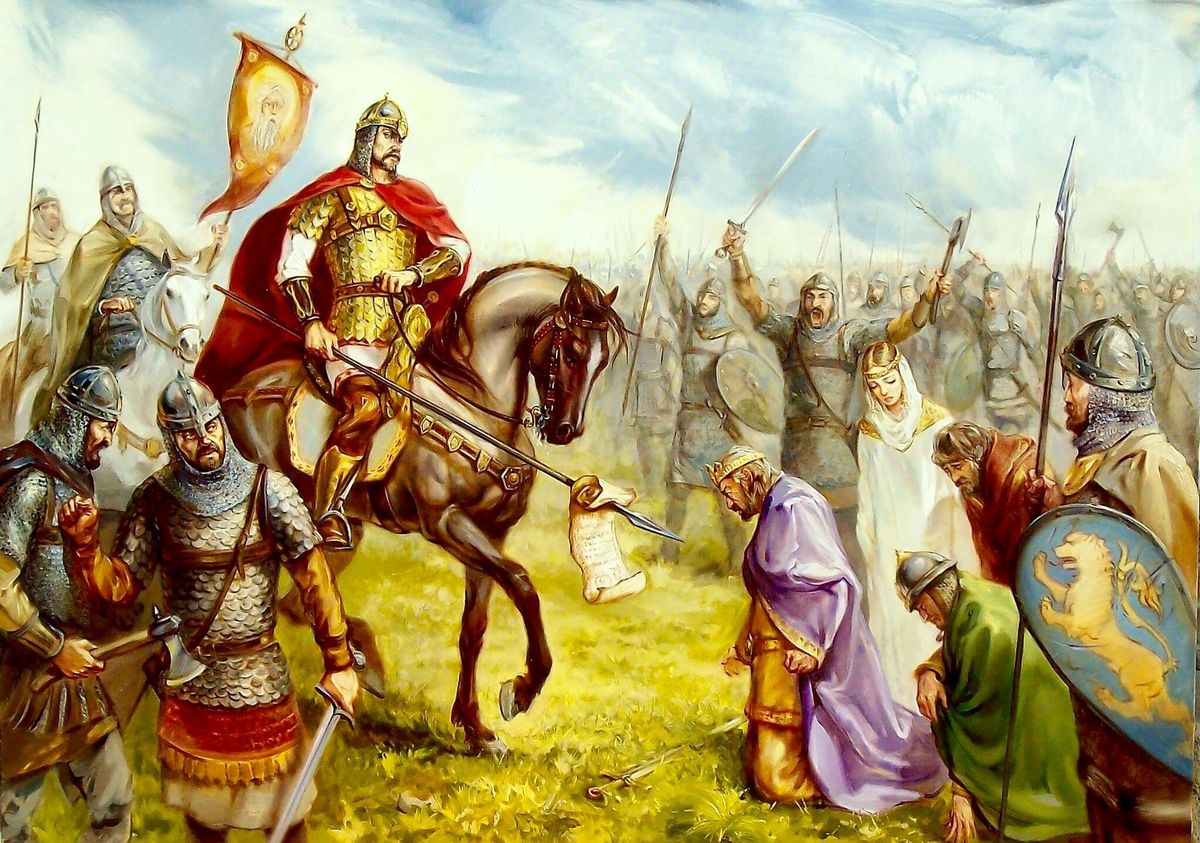
Second Bulgarian Empire Balkan Domination
BalkansBulgaria became the dominant power of Southeastern Europe after the Battle of Klokotnitsa. Ivan's troops swept into Theodore's lands and conquered dozens of Epirote towns. They captured Ohrid, Prilep and Serres in Macedonia, Adrianople, Demotika and Plovdiv in Thrace and also occupied Great Vlachia in Thessaly. Alexius Slav's realm in the Rhodope Mountains was also annexed. Ivan Asen placed Bulgarian garrisons in the important fortresses and appointed his own men to command them and to collect the taxes, but local officials continued to administer other places in the conquered territories. He replaced the Greek bishops with Bulgarian prelates in Macedonia. He made generous grants to the monasteries on Mount Athos during his visit there in 1230, but he could not persuade the monks to acknowledge the jurisdiction of the primate of the Bulgarian Church. His son-in-law, Manuel Doukas, took control of the Empire of Thessaloniki. The Bulgarian troops also made a plundering raid against Serbia, because Stefan Radoslav, King of Serbia, had supported his father-in-law, Theodore, against Bulgaria.
Ivan Asen's conquests secured the Bulgarian control of the Via Egnatia (the important trade route between Thessaloniki and Durazzo). He established a mint in Ohrid which started to struck gold coins. His growing revenues enabled him to accomplish an ambitious building program in Tarnovo. The Church of the Holy Forty Martyrs, with its facade decorated with ceramic tiles and murals, commemorated his victory at Klokotnitsa. The imperial palace on the Tsaravets Hill was enlarged. A memorial inscription on one of the columns of the Church of the Holy Forty Martyrs recorded Ivan Asen's conquests. It referred to him as the "tsar of the Bulgarians, Greeks and other countries", implying that he was planning to revive the Byzantine Empire under his rule. He also styled himself emperor in his letter of grant to the Vatopedi Monastery on Mount Athos and in his diploma about the privileges of the Ragusan merchants. Imitating the Byzantine emperors, he sealed his charters with gold bulls. One of his seals portrayed him wearing imperial insignia, also revealing his imperial ambitions.
